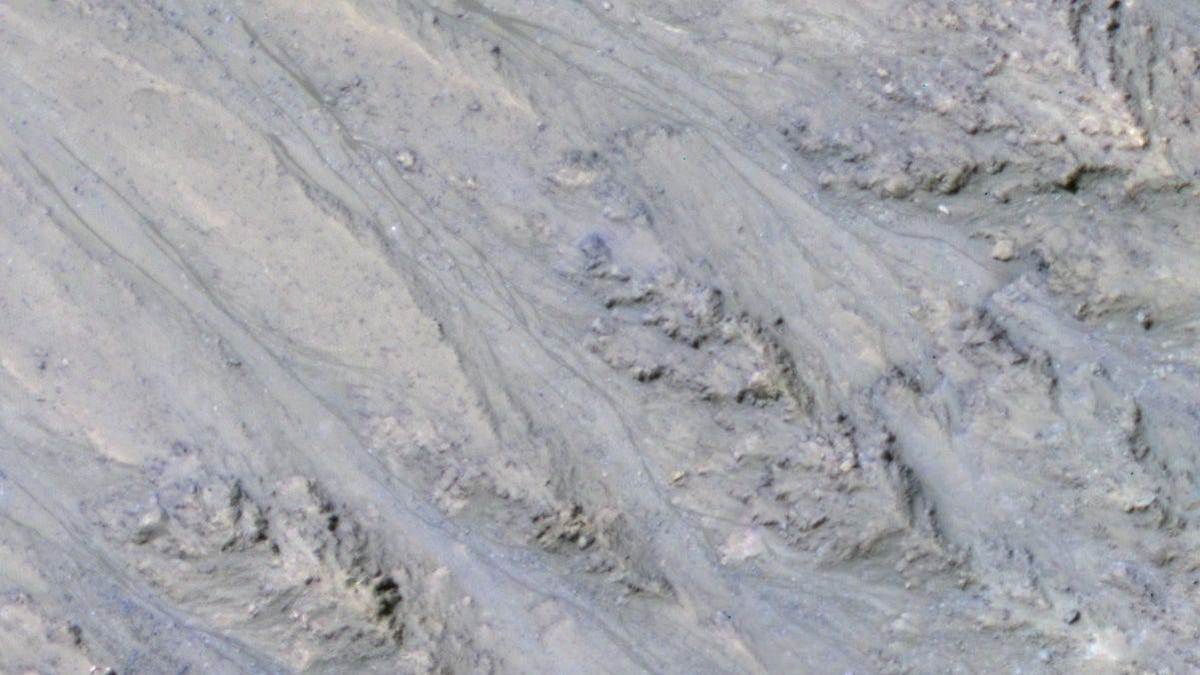NASA: Mars' strange streaks might not be water after all
New research suggests another possible origin for mysterious, recurring streaks in the Martian landscape.
We've got some big questions about Mars, but one of its most compelling mysteries just got a lot more intense.
"Recurring slope lineae" (RSL) are dark streaks, first discovered in 2011, that appear seasonally on parts of the Mars landscape. In 2015, researchers took RSL as evidence of active salt water flows on the red planet. In 2017, new findings suggest RSL may actually be from shifting sand and dust.
NASA titled its 2015 release "NASA Confirms Evidence That Liquid Water Flows on Today's Mars." Monday's release is called "Recurring Martian Streaks: Flowing Sand, Not Water?" It shows how new evidence can cause scientists to reevaluate previous findings.
The new study comes from a team of researchers led by astrogeologist Colin Dundas with the US Geological Survey. It looks at observations from NASA's Mars Reconnaissance Orbiter and determines that RSL occur only on steep slopes that are angled enough for dry grains of sand and dust to flow downward. NASA says it would also expect to find RSL on less-steep slopes if liquid water was the cause of the flow.
The RSL appear during Mars' warm seasons, disappear in colder times and then come back. There is still plenty of mystery surrounding them. "Traits with uncertain explanations include their gradual growth, their seasonal reappearance, their rapid fading when inactive, and the presence of hydrated salts, which have water molecules bound into their crystal structure," says NASA.
The team published its findings Monday in the journal Nature Geoscience with the title "Granular flows at recurring slope lineae on Mars indicate a limited role for liquid water."
The new research doesn't rule out the possibility of water surfacing on Mars. "The preference for warm seasons and the detection of hydrated salts are consistent with some role for water in their initiation," the paper says of the RSL phenomenon, though it also notes "liquid water volumes may be small or zero."
Modern-day Mars is an extremely dry place, though research from earlier this year suggests ancient Mars might have been much wetter than scientists previously thought.
The presence of notable liquid water on Mars would boost optimism for someday finding microbial life on the famously inhospitable planet, but the new report puts a damper on that.
While this may be a blow to your dreams of swimming on Mars, it opens an interesting new chapter in our understanding of the sometimes confounding planet. Expect scientists to continue studying these fascinating features in search of answers to their origins.
Crowd Control: A crowdsourced science fiction novel written by CNET readers.
Solving for XX: The tech industry seeks to overcome outdated ideas about "women in tech."


